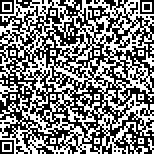下载中心
优秀审稿专家
优秀论文
相关链接
摘要

介绍了水体污染的遥感机理、方法,并探索在珠江广州河段水污染监测中的应用。研究表明:随着水体有机污染程度的增加,水体的可见-近红外光谱反射率逐渐降低。经比较发现,先对图像数据进行对数变换、IHS变换和KL变换后再进行密度分割及图像分类,可以更好地区分和识别水体污染。采用这一方法,制成了广州地区水体污染时空分布卫星影像图,并结合地面实际分析和调查资料,初步总结了珠江广州段水体污染的时空分布规律和污染变化趋势。通过对最新遥感数据的处理,结合区域或流域水污染的变化趋势和污染源研究,利用GIS技术建立区域或流域污染预警系统,为污染的宏观监测和研究以及水资源保护的决策提供了新的信息。
This paper introduces the remote sensing mechanism and methods of water pollution and application on water pollution monitoring in Guangzhou Section of Pearl River. The research indicates that water reflectance in VI NIR bands becomes decreasing as the increase of water pollution. Through comparison, it can be found that classification and segmentation image of remote sensing may distinguish and recognize water pollution more effectively after logarithm, IHS and KL transformation. Time spatial distribution images of water pollution are made through the above techniques, and the time spatial distribution characteristics and changing trends are summarized through combination to ground analytical and investigation data of water quality. A regional early warning system of water pollution of whole drainage area is built up by use of GIS technology, processing of latest remote sensing data and the research of pollution sources. This research provides new information for the large scaled monitoring of water pollution and water resources protection.

